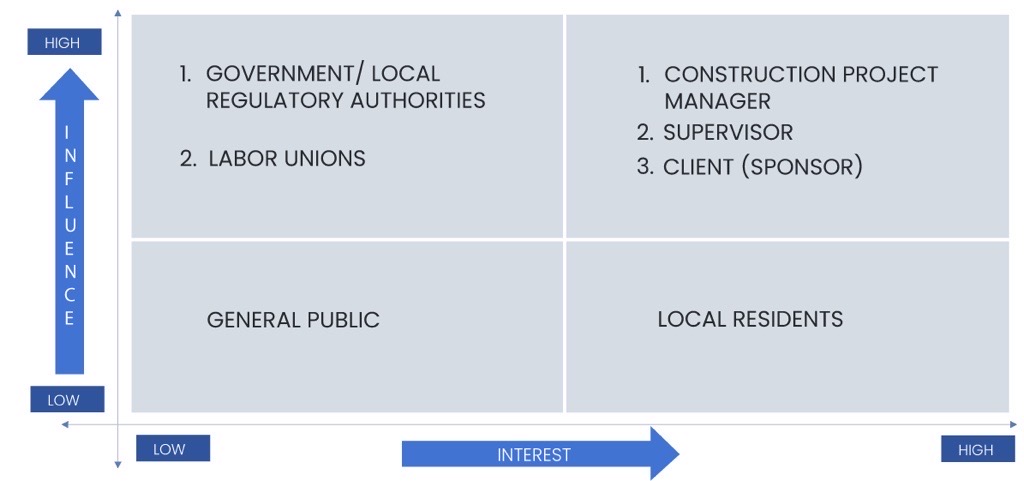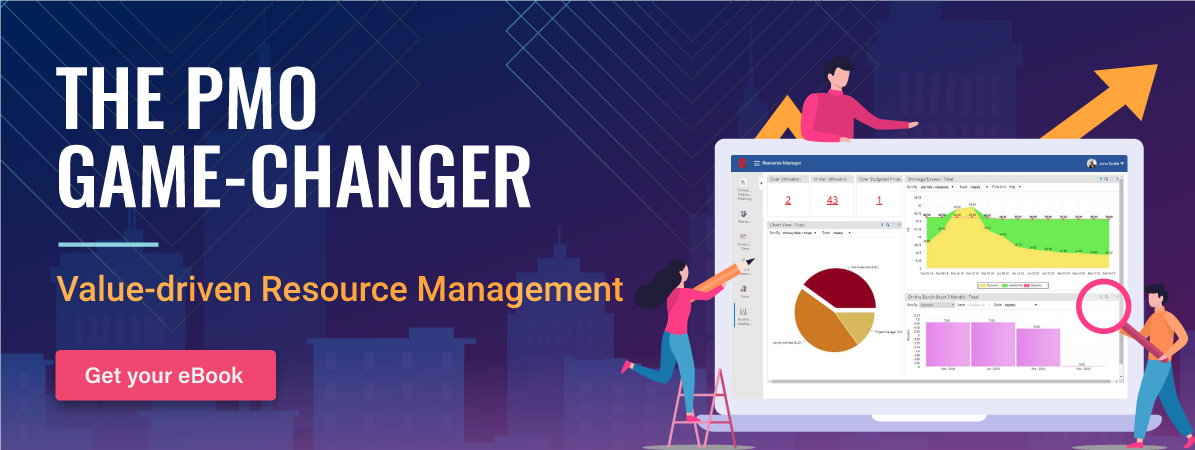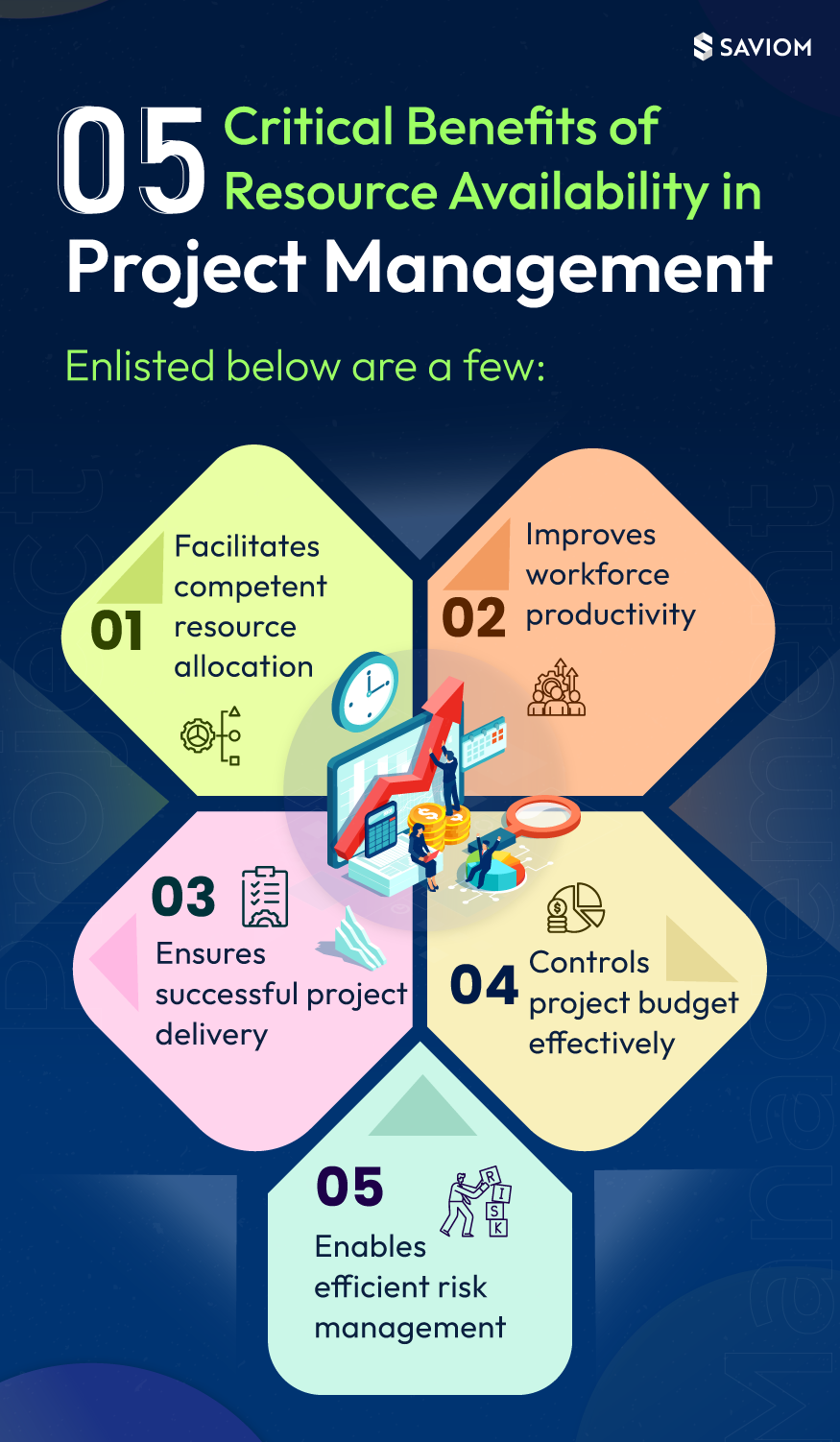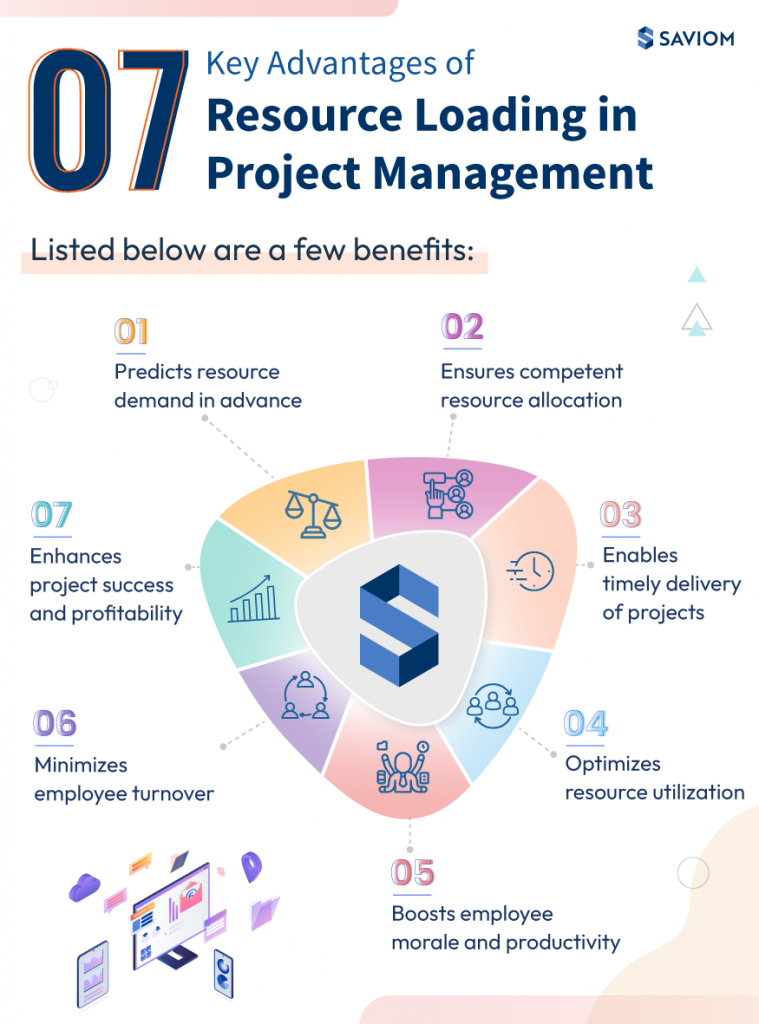Apart from the efforts of resources and project managers, the fate of the project lies in the hands of executives, upper management, clients, and sponsors. They have the authority to approve or reject any project, sponsor or decline to buy in, alter the requirements at any stage, and so on.
In the project management realm, they are called “stakeholders”.
The failure to handle project stakeholders can directly impact the budget, timeline, or scope of a project and halt its progress or completion.
So, it is vital to diligently communicate and engage with them and cater to their expectations throughout the project.
However, stakeholder management is easier said than done and sometimes turns out to be an arduous job for even seasoned project managers.
PMI’s research also reveals the same:
Only 36% of leaders could secure their project stakeholders’ and key staff’s buy-in around the project’s aims and benefits very well.
This blog explains why effective stakeholder management matters and the best practices to achieve that.
But first, let’s start by understanding:
Who are stakeholders in a project?
PMI defines stakeholders as:
Individuals and organizations who are actively involved in the project, or whose interests may be positively or negatively affected as a result of project execution or completion.
In other words, an individual with a “stake” in a project and can either influence it or be influenced by its outcome is a stakeholder.
Out of these, key stakeholders not only have a stake in the project but also have a major influence on it. They can even disrupt or bring the project to an abrupt halt if they withdraw their support.
For example, if you create a website for a client, the business owner (your client) is a key stakeholder. Therefore, it’s important to understand their requirements, develop the website accordingly, make any feasible changes requested, and convey progress regularly. It is because they may disapprove certain features or elements and even reject the website itself if it doesn’t meet their expectations, leading to a project failure.
Given the basic definition of a stakeholder, let’s understand its types.
Types of project stakeholders
Internal stakeholders
Individuals or parties that are a part of an organization and are directly involved in a project are called internal stakeholders. Examples are the project manager and team, sponsor(s), and other internal staff like the sales or marketing team.
External stakeholders
Individuals or parties that are not a part of the organization but may or may not be directly involved in a project are called external stakeholders. However, the project can affect them, or they can indirectly impact it. Examples are clients, suppliers, communities, shareholders, end-users, government, creditors, etc.
Now that the types of stakeholders are clear, let’s learn how to identify them.
How to identify stakeholders in a project?
Not every stakeholder has the same degree of influence or interest in the project. Moreover, the project’s outcome may not impact them to the same extent. Thus, project stakeholder identification and prioritization become imperative.
It will also ensure that you don’t leave out any stakeholders and face their disagreement at a later stage. Once the identification is done, it will help you determine the level of effort required with each one based on their priority order.
An influence/interest chart is one of the best ways to identify, visualize, and prioritize stakeholders involved.
According to it, there are four types of project stakeholders.
- High influence, high interest – These are the key decision-makers in a project. Managing their concerns, expectations, and requirements closely and diligently is crucial. For example – Investors
- High influence, low interest – They are not directly involved in a project but can significantly influence and even disrupt it. Thus, it is necessary to keep them satisfied. For example – The Government and political groups
- High influence, low interest – They are not directly involved in a project but can significantly influence and even disrupt it. Thus, it is necessary to keep them satisfied. For example – The Government and political groups
- Low influence, low interest – These are the least significant stakeholders. Still, it is imperative to monitor them on a timely basis and keep them in the loop to check if their interest or influence have changed over time. For example – The general public
Let’s understand it better with an example of the construction of an entertainment park. Here, the owner has the highest stake in terms of influence and interest. Further, government authorities may not be interested but can exert their authority to halt the construction work in case of a failure to seek requisite approvals. On the other hand, despite having no direct influence, nearby residents may show interest as it may open new entertainment and business opportunities.
So, the influence/interest chart can be created as follows:

The next step after stakeholders’ identification is their management.
The following section explains why it is crucial.
Why is project stakeholder management important?
As already mentioned, effective project stakeholder management is integral for successful project delivery. Managing their expectations and demands is essential as they hold control over various aspects, including funding, resources, approvals, knowledge, etc.
Besides, they have experience in the given industry, and some are subject matter experts. Thus, they can guide the project managers and help them determine deliverables, project constraints, and associated risks. Their valuable insights and support increase the probability of a project’s success exponentially. Moreover, if one fails to engage these key stakeholders and fulfill their expectations, they may withdraw their consent, leading to the project’s failure.
The best example is your client, who may disapprove or cancel the project if it fails to meet their requirements in any aspect. It may not only cause your business loss but also hamper your company’s reputation. So, keeping them thoroughly involved, updated, and engaged is critical to ensure a project’s success.
The following section explains the best practices to do that.
7 Effective ways to manage project stakeholders
If you fail to deal with project stakeholders properly, it may pose challenges like disagreement, withdrawal of consent, differences in perspectives, etc. Nevertheless, following the right strategies can help a project manager convince the stakeholders and get them on board.
Here are a few proven tactics to achieve the same:
Involve stakeholders from initiation to closure
From project initiation to execution and its closure, stakeholders play a vital role at every stage. For instance, a project plan will be inconducive without understanding their expectation before the outset. Thus,
Conducting meetings with stakeholders is imperative for managers to ensure that the project plan aligns with the final deliverables.
After the project’s approval and initiation, conducting regular meetings with them to convey the progress is equally important. It helps determine if anything has changed in terms of priorities, requirements, etc. It will help managers to realign their efforts before it’s too late. Additionally, conveying bottlenecks proactively also helps sustain trust and transparency and mitigate issues at the right time. In the end, getting all the project closure documents signed off prevents last-minute disagreements and conflicts around final deliverables.
Seek agreement on milestones/deliverables
Once you create a work breakdown structure and define milestones, seeking stakeholders’ concurrence is critical to ensure they are on the same page. It’s all the more essential when you are working on a long and complex project involving multiple phases where deliverables are defined stage-wise. For instance, software development may consist of multiple iterations with different features in each release.
Thus, if you create milestones and seek approvals for these features before every release, it helps keep the design and its completion in line with the expectations. Naturally, failure to take this approach may result in a mismatch between final deliverables and expectations, resulting in rework, budget/time overruns, etc. On the other hand, doing so will keep the stakeholder’s trust intact and help you build rapport with them.
Convey the updates about the project’s progress
As discussed earlier, regularizing the communication about the project’s progress helps strengthen trust and faith. Hence, the onus lies on a project manager to convey regular updates about the accomplishment of milestones at every stage. It will help reduce discrepancies and ensure that the project’s course is in line with stakeholders’ expectations at every stage.
Further, reporting challenges and issues faced during the course of the project is also necessary. It helps brainstorm and work out the ways to eliminate the hindrances with valuable inputs, suggestions, and support from project stakeholders. Moreover, transparency about issues negates any room for impractical expectations and builds your credibility. This eventually ensures the successful completion of a project in the desired manner.
Be transparent about risks and challenges
Risks and challenges are inherent to every project. Thus, giving a false scenario to the stakeholders and conveying it will be a smooth ride all along will lead to unrealistic expectations. Therefore, a project manager should compile the risks involved and convey them transparently at the approval stage and forewarn the stakeholders. To build a risk chart, one can pair their experience with systematic methods like assumption analysis, risk matrix, cause and effect diagrams, etc., to identify and prioritize risks.
Based on that, you should focus first on the high-priority and critical risks and inform stakeholders about them. It will also help you build a solid risk mitigation or a contingency plan beforehand. Moreover, after the project starts, managers should proactively track these risks to prevent them from turning into issues.
Communicate immediately when a risk turns into an issue
As already clear, it is important to inform key stakeholders as soon as any risk – minor or major turns into an issue. It implies that a project manager should not adopt the “wait and watch” policy and convey it only when it exceeds the manageable threshold. In addition to that, getting approval from stakeholders before implementing a mitigation plan is imperative too. Or else, it may lead to conflicts and discrepancies later.
Moreover, when stakeholders notice that you are not only conveying the issues but are also actively participating in handling them, it enhances their trust and engagement. Thus, it becomes easier to seek stakeholder buy-in and support to expedite the issue-resolving measures. This will help boost the goodwill between you and them even further.
Prepare a robust change management framework
Anything that transforms or influences a project, tasks involved, processes, structures, or even final deliverables at any stage is called a change. Let’s assume that your team is building a business app for a company. The client requests the addition of two functionalities that were not initially agreed upon. Failing to accommodate this request properly may lead to disagreements and disappointment.
To avoid this, the project manager should follow the change management framework that lays down the guidelines to handle such change requests. They should approach the Change Control Board, a body of senior internal stakeholders that reviews suggestions by clients. Discussing these change requests with the CCB will help examine the impact of the ad-hoc changes on the project delivery and incorporate them if deemed feasible. Moreover, a disciplined approach to incorporate changes will minimize room for any unfeasible requests or conflicts.
Manage and resolve stakeholders’ skepticism effectively
Not every stakeholder is easy to convince. Some of them are skeptical of the projects and may give you a difficult time. Thus, tackling with them may require extra effort and patience.
A project manager should take appropriate initiatives based on the type of “difficult” stakeholder.
Let’s look at some categories and ways to handle them.
Micromanagers – They may try to control all the aspects of a project. Assigning senior team members to “deflect” their queries politely and tactfully can help manage them.
Pushies – They want to churn the maximum out of the minimum investment, tighten the timelines, or expand the scope. The project manager here should take a firm stance without accepting their “unrealistic” demands unless they show more flexibility and support.
Skeptics – They question the team’s ability and the project’s progress. Delivering on commitments consistently and giving regular demos to show real-time progress is the key to gaining their trust.
Idlers – They are highly concerned about the project’s progress but fail to provide the requirements at the right time, leading to disruptions and issues. To handle them, managers need to stay in constant touch, send regular reminders, track and update requirements and milestones regularly.
Saboteurs – These form the hardest category of stakeholders to deal with and may start working against your project due to their personal or political motives. An approach to win back their consent is by demonstrating the project’s benefits effectively. Moreover, proactive tracking of status reports, risk registers, steering meetings, etc., are crucial to zero in on areas that need fixing and control measures before it gets late.
The above-mentioned practices can come in handy when dealing with stakeholders and help you win more projects.
Conclusion
Stakeholders hold a key position in defining and shaping the success of a project. Hence, it is highly important to identify them, understand their expectations, and cater to them. Combining a positive attitude and some good practices as discussed above can help make project stakeholder management efficient and effortless.
So, how do you implement a stakeholder management plan in your organization?
The Glossary
The SAVIOM Solution
SAVIOM is the market leader in helping multinational clients manage their resources efficiently and effectively. With over 20 years of experience, this Australian-based MNC has a global presence across 50 countries and has helped 100+ clients with their Workforce Planning Software. Saviom also provides tools for Enterprise Project Resource Management, Project Portfolio Management, and Professional Service Automation. Boost your remote team collaboration with Saviom.















